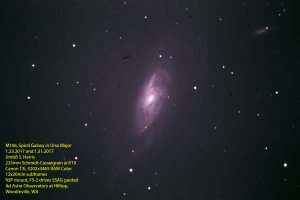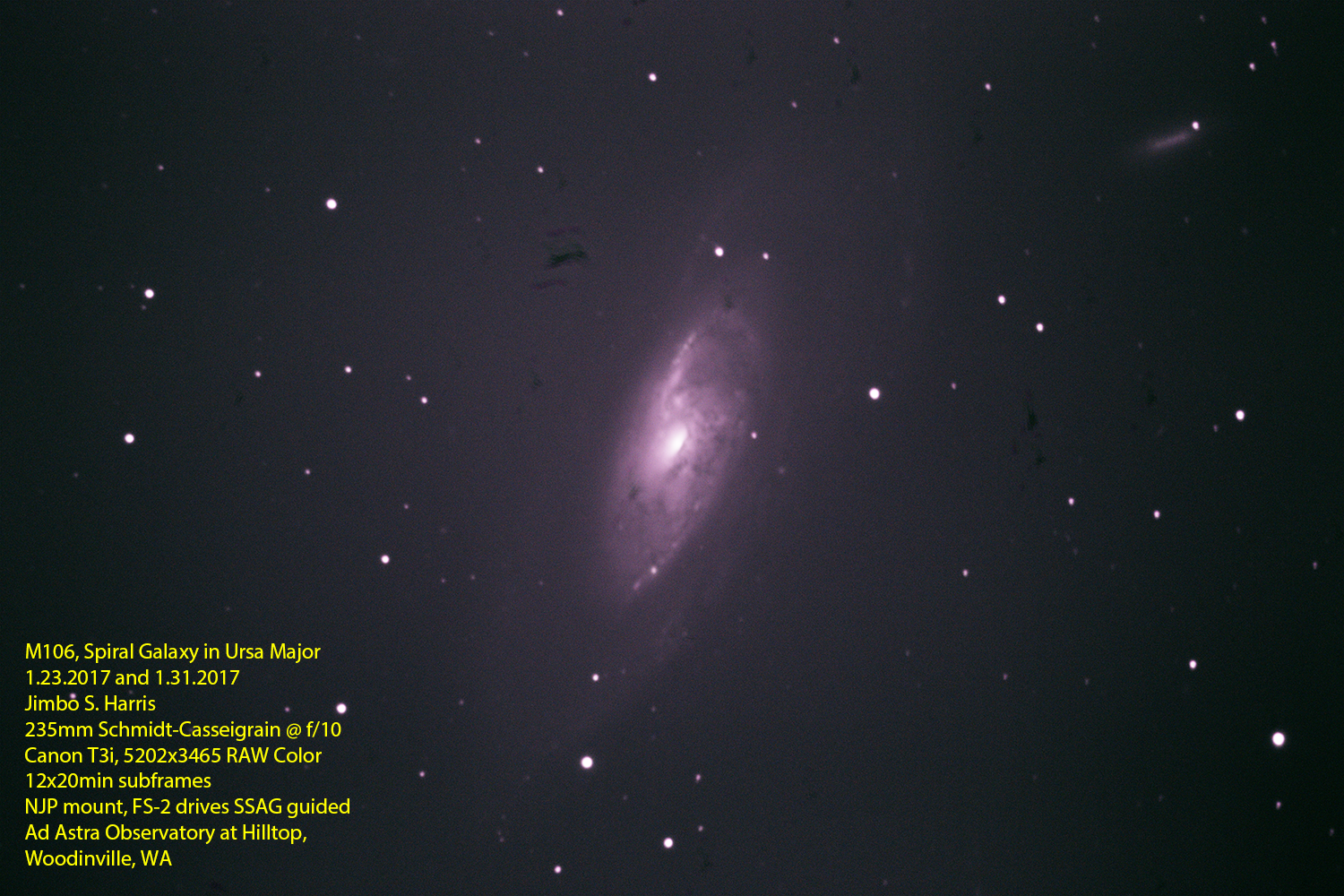I got Cassie back on the mount, and now my target selection has totally changed. All the tolerances need to be a little tighter with the longer focal length, so I decided to chase a big, bright target first.
This image is also one of my first (with a certain NGC7000 picture one of the lone exceptions) which used data from different nights. Part of my imaging workflow that adds a bit of randomness is the ability to precisely center a target.
I got platesolving working on Pumpkin before I switched, but had a couple of hiccups getting it working again with Cassie. Close enough, though. The edges of this image weren’t too badly dithered.
I need to work on white balance at some point, because it seems like my red-heavy imaging train puts out a generally purple version of this object.

As I’ve noted before, M106 is one of the largest (by angular size) galaxies visible in the Northern Hemisphere. The list goes:
Milky Way
The Andromeda Galaxy M31
The Triangulum Galaxy M33
Bode’s Galaxy M82
M106.
It doesn’t have a fancy name, that I know of. But, it’s big and bright, and I’ll keep shooting it until I get a great shot.
Welcome to spring.



My most favorite galaxy along with its partner NGC 4217 who I also like more than others.
I have picked up the gorgeous NGC 4217 in several shots, but the FOV is too tight for Cassie; M106 and NGC 4217 might make a nice pair in Trixie; I’d have to play with the star charts to see if I can make them fit… I’ve always been amazed that this showy, large, bright galaxy gets so little press because of nearby M51, M64, M101, even M3…